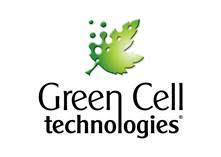Green Cell Technologies’® Disruptor™ technology hits the sweet spot
Cape Town: Having proven that its Disruptor™ technology is more than suitable for the winemaking and beer sectors, South African bio-technology company, Green Cell Technologies® (GCT®), has turned its attention to the lucrative fruit sugar concentrates market. Its technology is directly challenging current outdated ‘pressing’ methods, ushering in a new era of modern, cost effective and more natural processing that has far-reaching consequences for the global food and beverage manufacturing sector.
Today, the company released the outcomes of a series of comprehensive trials confirming that with the use of Dynamic Cellular Disruption® (DCD®), through its Disruptor™, natural sugar extraction can occur with greater ease. This happens without the need for any added enzymes – no pectinase or amylase at all. All available sugars are extracted and are immediately available for concentrates. This is achieved in one smooth process.
Further, the natural pectin in the pumice that remains, is intact, and this opens up opportunities to easily utilise the natural pectin and on-sell to the food industry for a multitude of applications. The cellulose fibres that are left behind in the pumice are also able to be efficiently processed, and used for the baking industry, as an example.
This has enormous consequences and significance for the global multi-billion Dollar concentrates commodity market, the world fruit juice-manufacturing sector, as well as food processing that involves pectin and cellulose.
To date, manufacturers are reliant on traditional ‘press’ methods of extraction, which typically generate huge amounts of wastage containing vast levels of sugars. This represents millions of Dollars of unrealised revenue.
The results are impressive and have further benefits down the line too. With the same technology and similar process, it means that manufacturers are now able to produce fruit juices with lower sugar content, but with similar taste profiles and added nourishment. This comes as a result of the DCD process opening up all of the plant cell structures – without the use of harmful heat or chemicals – to release all of the available nutrition. With consumers being more informed about the effect of the foodstuffs they consume and the growing demand for less sugary products, this is good news for producers and marketers hard-pressed to find novel ways to make better products, at reduced cost and with actual benefit.
CEO of Green Cell Technologies, Roy Henderson, explained: “We have always ‘theoretically’ known what processing apples upfront, using the Disruptor could achieve, but now we can conclusively show that the use of Disruptor technology can replace the conventional press and use of added enzymes, for making juices and extracting fruit sugars.”
By the numbers:
If one looks at an industry standard of 14 Brics in an apple, with the costly addition of amylase and pectinase enzymes and other now unnecessary processing aids, typical yields are 113 to 115 litres of 70 Brics concentrate per tonne of raw material used. This is the first press.
A secondary processing step is also undertaken to utilise the pumice by adding water, more enzymes and heat the product to a specific temperature that needs to be retained for a period of time, then centrifugally decanted to remove more of the sugars. This then takes the yield to a typical 130 – 132 litres of 70 Brics concentrate per tonne of raw material.
However, in one simple continuous flow, the Disruptor™ achieves an average of 150 litres of 70 Brics concentrate per tonne. With no added enzymes or D-Galacturonic acid present. DCD Concentrates can command higher commodity prices for the simple reason they are unadulterated. Couple this with the fact that it is also far more cost effective to process using Disruptor technology, GCT has really hit the sweet spot in this highly competitive market.
In short:
· Disruptor technology and the DCD process is a simpler, cheaper, quicker, production process.
· Less processing aids, smaller footprint to do the same volume If not more.
· Lower grade of fruit can be processed therefore reducing raw material costs and reducing wastage or dumping.
· Equally applies to any fruit sugar extraction product – from oranges, pears, grapes, and more.
· A waste stream that can be further beneficiated to generate goods with higher commodity prices.
· Technology that can suit a multitude of different plant types and can therefore be used to process different products during off-season times, if required.
· Increased revenue opportunities.
· Better nutritional products.
· Food security and sustainability achieved.
Henderson concluded by saying: “The reason that today’s food and beverage manufacturers use all these processing aids, is because the current technology has reached its zenith and has shown that it cannot completely liberate the contents of the plant cell structures. That Is now null and void.
“It is exciting to watch how manufacturers conventional perceptions convert when they realise the true benefits of the Disruptor technology’s effectiveness. We are already working with some forward-thinking global processors, who are quickly reaping the benefits of being early adopters in a sector under pressure to feed ever more people from a shrinking supply source, with food and beverages that matter.”

